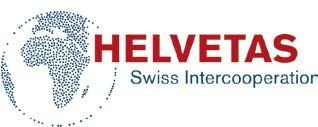In general, the risk of not paying attention to disaster risk reduction (DRR) can lead to serious deterioration of the economy and ecosystems. Frequent small and medium-impact disasters and single intense events can severely disrupt community liveliness-the systems that provide food distribution, water supply, health care, transportation, waste disposal, and communications- locally and with the rest of the world. Business and private investors may shy away from those communities with a perceived indifference to acting to reduce disaster risk. In order to overcome the perception that the disaster risk management budget competes for scarce resources with other priorities, risk reduction should become an integral part of local development plan. Holistic disaster risk management is more effective when it simultaneously addresses the needs of many stakeholders and competing priorities. In general, the incentives are stronger when disaster risk management visibly contributes to improved economic and social well-being in a community. Mayors, local government officials and decision makers frequently must deal with the impact of disasters that arise from natural or man-made hazards. In disasters, local governments are the first lines of response, sometimes with the wide-ranging responsibilities but insufficient capacities to deal with them. They are equally on the front line when it comes to anticipating, managing and reducing disaster risk, setting up or acting on early warning systems and establishing specific disaster/crisis management structures.
A disaster resilient community is a community where disasters are minimized, which has an inclusive, competent and accountable local government, where the local authorities and the population understand their risks and develop a shared, local information base on disaster losses, hazards and risks, where people are empowered to participate, decide and plan their community together with local authorities, has taken steps to anticipate and mitigate the impact of disasters, is able to respond, implement immediate recovery strategies.
Armenia is at high risk of natural and technological hazards, owing to high levels of exposure and vulnerability. There are many issues and concerns in the country, which increase the vulnerability and exposure of the Armenian population to these hazards.
Starting from 2007 up to now the United Nations Development Program (UNDP) office in Yerevan is implementing the disaster risk reduction project in Armenia which aims to strengthen national disaster management capacities. Within the framework of this project and in compliance with Hyogo Framework for Action (HFA) priority directions a DRR National Strategy was developed and adopted by the Government of Armenia, the overall goal of which is “building resilient country”. Following this approach the practical tool was developed and then enriched with additional planning component, the community resilience certificate, which presumes consideration of DRR in the community development plans.
In October, 2013 the “Building Resilient Rural Communities” pilot project was launched in the rural communities of Nrnadzor and Karchevan of Syunik Region (Meghri sub-region). The project was undertaken within the Disaster Risk Reduction (DRR) National Platform Resilience Consortia performance framework by the joint initiative of UNDP, Markets for Meghri Project (M4M) and UNOCHA Regional Office for Caucasus and Central Asia (ROCCA).
The Disaster Risk Reduction issues are considered as major preconditions for the sustainable growth of Meghri region within the framework of Markets for Meghri project. Moreover, within the scope of the pilot project M4M and UNDP stressed the importance of engagement of young people in pilot project’s activities so as to create a platform for cooperation between young professionals in the field and local people living in remote areas. Likewise, young leaders can serve as role-models for their peers living in rural regions of Armenia. For this reason Master and Bachelor degree students of Crisis Management State Academy (CMSA) of the Ministry of Emergency Situations (MoES) were invited to participate in this event in order to get a firsthand knowledge and community based practices on the risk-development-resilience interconnection. 12 selected young leaders had chance to directly be a part of this initiation. They took part in every activity organized in the framework of this project.
First meetings of the event were held in both communities of Meghri region-Nrnadzor and Karchevan, with communities’ mayors and governance members. The purposes of these meetings were to introduce the “resilient community” concept to community members and students. After these meetings the assessments of vulnerability and capacity were conducted by the experts with the direct engagement of students. The first group of students and experts was collecting data from the community residents via specific questionnaires which included questions referring to various aspects of the community life, particularly reflecting DRR aspects. The questionnaire survey enabled people to express direct and impartial opinion about day-to-day problems faced by their community. The second group was involved in focus group discussions. Focus groups were organized from the selected individuals with specific specialization (administrative workers, medical staff, teachers, farmers, women, etc.). Focus group discussions provided participants’ understandings and insights of the community’s day-to-day problems. After the focus group discussions a seasonal and historical calendars were elaborated. The seasonal calendar was completed by the community residents in order to see hazards and assess risk frequencies from their perspective. The historical calendar had been also completed jointly with community members with equal representation from all target groups giving a due consideration to gender equality and participation of the elderly and the youth. The third group of students and experts was engaged in mapping activities. Mapping in DRR sector is acknowledged as a tool for visualizing positions of risks which are either not noticed or observed in everyday life. The fourth group was taking interviews from the community mayors. During these interviews another survey questionnaire was used designed particularly for the community leaders. All above mentioned activities were implemented by groups within a day for each community. After each hard working day students along with the representatives from the organizing projects as well as experts’ team were conducting meetings for summarizing the results of the day and for doing some preliminary analysis of the collected information. In addition students and experts were being involved also in the collection of secondary data regarding each community. The sources of secondary data were published official data from governmental bodies, maps, reports on community projects from other organizations etc.
Students were too impressed with the whole event. According to the interviews taken from the students they were really very excited: “I couldn’t even imagine that we would work with such professional people. It was awesome that in literally a few days we learnt things that otherwise would take years to learn. People are so right when they say it’s better to see once than to hear for thousand times”, stated student Sofi Baxtamyan. “On my way to Meghri I couldn’t even fancy what was awaiting me there. I knew this was a remote area but still I couldn’t imagine that people there had so many problems”, said student Lidia Matevosyan. “I met very active and open people here, especially the young. They just need some support, new perspective and a different approach to various things and I am happy we could somehow help”, said another student Karine Manukyan.
After the event (within two weeks) experts came up with analysis and findings which were submitted to the community members and project partners for conclusions and recommendations. The analysis gives precise knowledge on community hazards and risks with an opportunity to arrive at priorities, existing reduction capacities and ways of using these capacities to the benefit of the community knowledge enhancement and expression of kind will. The four year development plans of these communities will be elaborated in May and thanks to this pilot project and the commitments from M4M and UNDP teams, the abovementioned recommendations and conclusions will be taken into account accordingly, for the establishment of community DRR / resilience teams to be further considered and endorsed by the community governance decision. Further each of these communities based on these assessments will have their Community Risk Certificates (CRC), which will be seen as a community “health monitor” that registers community’s physical and socio-economic parameters along with its “health” status providing clear information on the risks to which the particular community is exposed and coping mechanisms identified and agreed by the community.
Currently M4M and UNDP are considering the possibility of implementation of this project in other communities of Meghri region as well, in particular in the towns of Meghri and Agarak, so as to have more resilient communities in Armenia.
0















